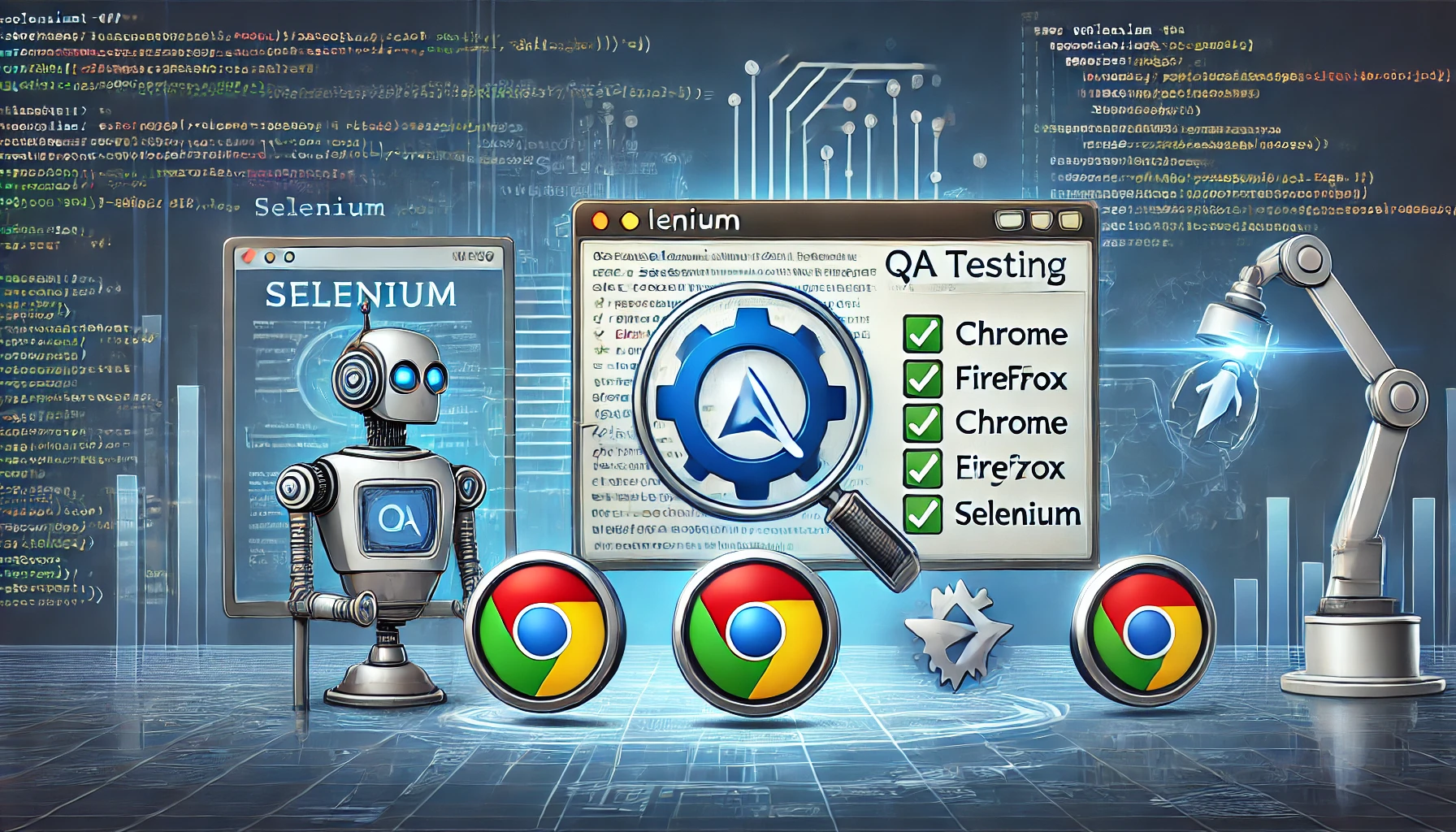In today’s fast-paced digital world, software is the backbone of almost everything we do. But how do companies ensure that the software we use every day is reliable and bug-free? Enter software testing services, and more specifically, Selenium testing. Whether you are a business looking to hire QA engineers or an individual curious about how testing works, understanding Selenium and its role in automation testing is essential.
This article breaks down everything you need to know about Selenium QA testing in a simple, easy-to-follow way. So, if you’re looking to learn how automation testing companies use this tool, or you’re just intrigued by the topic, you’ve come to the right place!
1. Introduction to Selenium Testing
Have you ever used a website that was slow, buggy, or crashed unexpectedly? Annoying, right? That’s where software testing comes into play. Quality assurance (QA) testing ensures that your experience with software, whether on a mobile app or a website, is smooth and reliable. Selenium is a powerful tool in this space, especially in automation testing.
2. Why Software Testing is Crucial
Before we dive deeper into Selenium testing, let’s first understand why software testing services are so important. Think of software testing as a safety net. Without it, software can behave unpredictably, causing glitches, crashes, or even security vulnerabilities. Just like a house needs a strong foundation, software needs proper testing to ensure it’s ready for the real world.
3. What is Selenium?
So, what exactly is Selenium? Selenium is an open-source framework specifically designed for testing web applications. It allows QA engineers to automate repetitive tasks and simulate real user interactions on websites. Imagine Selenium as a tireless robot that does the same task over and over without making mistakes, ensuring everything works as it should.
4. The Importance of Automation Testing
Automation testing has revolutionized how software testing is done today. Instead of manually testing a website by clicking every button and filling out every form, automation testing companies use tools like Selenium to automatically run through these actions. This not only saves time but also ensures thorough testing, leaving no room for human error. Automation testing helps businesses scale their testing efforts while reducing costs.
5. How Selenium Works
Selenium interacts with web browsers like Chrome, Firefox, and Safari, mimicking the actions of a real user. It can click buttons, type into text fields, and even scroll through pages—all while checking if everything works as expected. It can be used for a variety of tests, including functional testing (making sure the software does what it’s supposed to) and regression testing (ensuring new updates don’t break existing functionality).
6. Types of Selenium Tools
Selenium isn’t just one tool; it’s a suite of tools designed to meet different testing needs:
- Selenium WebDriver: Allows you to automate web application testing across different browsers.
- Selenium IDE: A record-and-playback tool that lets you record your interactions with the website and then play them back.
- Selenium Grid: This tool allows running tests on multiple machines and browsers simultaneously, speeding up the process.
Each of these tools has a specific purpose, and together they make Selenium a comprehensive solution for automation testing.
7. Advantages of Using Selenium
Why do so many automation testing companies and QA engineers prefer Selenium? Here are a few reasons:
- Open-source: It’s free to use, making it accessible for companies of all sizes.
- Multi-browser support: Selenium works with all major browsers, ensuring cross-browser compatibility.
- Flexible and extensible: It integrates well with other tools like Jenkins and Docker, making it a great fit for DevOps pipelines.
- Community support: Since it’s open-source, there’s a huge community of developers contributing to its improvement.
8. Why Companies Hire QA Engineers
Automation testing might sound like it could replace manual testers, but that’s not the case. Even with powerful tools like Selenium, companies still need to hire QA engineers to design, write, and monitor the automated tests. QA engineers have the expertise to understand what needs to be tested and how to ensure the software is meeting business requirements.
9. Selenium vs. Manual Testing
You might wonder, “If automation testing is so great, why do we still need manual testing?” The answer lies in the human touch. While Selenium excels at repetitive tasks, manual testers are better at understanding the user experience, finding usability issues, and testing for edge cases that an automated script might miss. A combination of both is often the best approach.
10. How to Choose an Automation Testing Company
If you’re a business looking to outsource your testing, choosing the right automation testing company is crucial. Look for a company with:
- Experience in your industry: Different industries have different testing needs.
- A solid track record: Ask for case studies or testimonials.
- Technical expertise: The company should have experience with tools like Selenium and other related technologies.
- Communication skills: Clear communication is essential for understanding requirements and delivering results.
11. Best Practices for Selenium Testing
To get the most out of Selenium, follow these best practices:
- Write clean and maintainable scripts: This ensures that your tests are easy to update as the software changes.
- Use proper test data management: Ensure that your test data reflects real-world usage.
- Run tests regularly: Automated tests should be run frequently, especially after every update.
- Parallel testing: Use Selenium Grid to run tests in parallel on multiple browsers and machines to save time.
12. Challenges of Selenium Testing
Like any tech tool, Selenium has its challenges. Some of these include:
- Initial setup: Getting started with Selenium requires some technical expertise.
- Limited support for non-web applications: Selenium is designed specifically for web applications, so if you need to test mobile or desktop apps, you’ll need additional tools.
- Maintenance: Automated tests can be fragile, meaning they may break when the application changes. Maintaining these scripts can be time-consuming.
13. How to Hire QA Engineers for Selenium Projects
Hiring the right QA engineers for Selenium software development projects involves more than just looking at resumes. Consider:
- Experience with Selenium: Ensure they have hands-on experience with Selenium testing.
- Problem-solving skills: QA engineers need to think critically to identify issues and design tests that catch them.
- Communication: They need to communicate effectively with developers and other team members.
- Knowledge of automation testing: Besides Selenium, familiarity with other automation tools is a plus.
14. Selenium in Today’s Market
Selenium continues to be one of the most popular tools for web automation testing, and for good reason. With businesses moving more of their operations online, the demand for reliable, user-friendly software has never been higher. Companies that invest in QA and automation testing services are better equipped to deliver high-quality products that meet customer expectations.
15. Conclusion
Selenium has become a cornerstone in the world of automation testing. Whether you’re a business looking to hire QA engineers or someone exploring the world of software testing services, understanding Selenium is crucial. It’s flexible, reliable, and supported by a vast community of developers, making it a go-to solution for many automation testing companies.
Investing in quality software testing services, especially those that use automation tools like Selenium, can save businesses time and money, all while delivering a better product. As the digital world continues to grow, so will the importance of QA testing.



